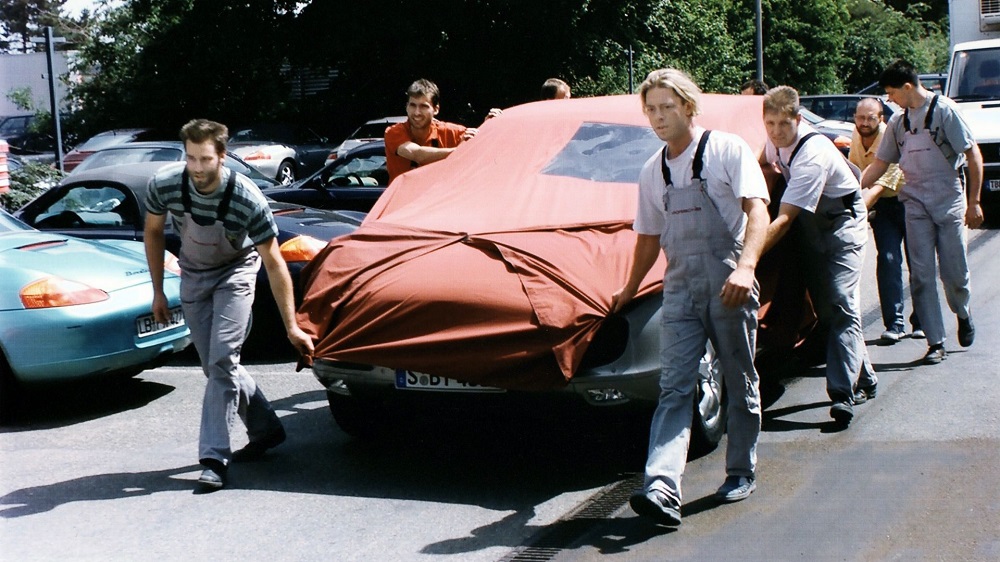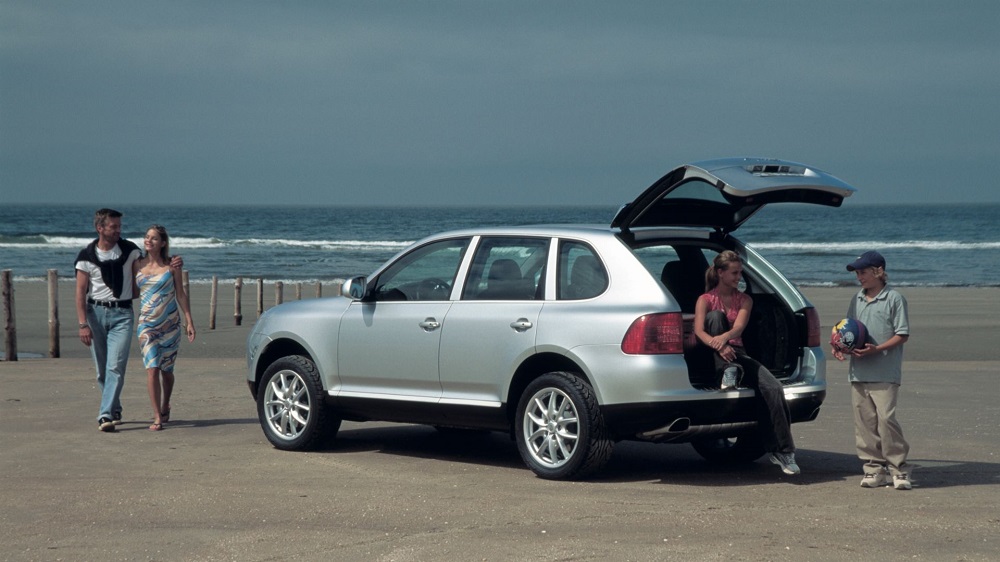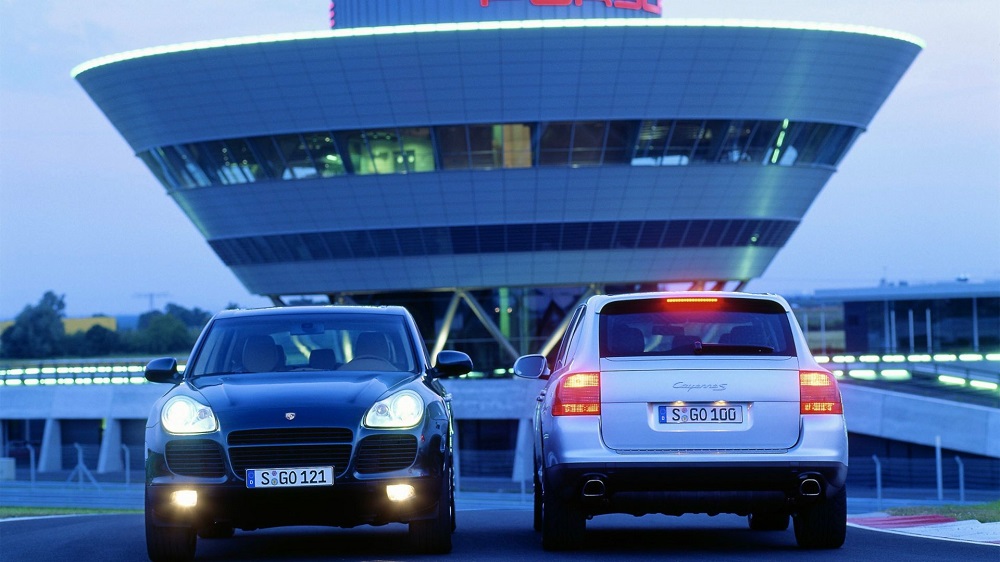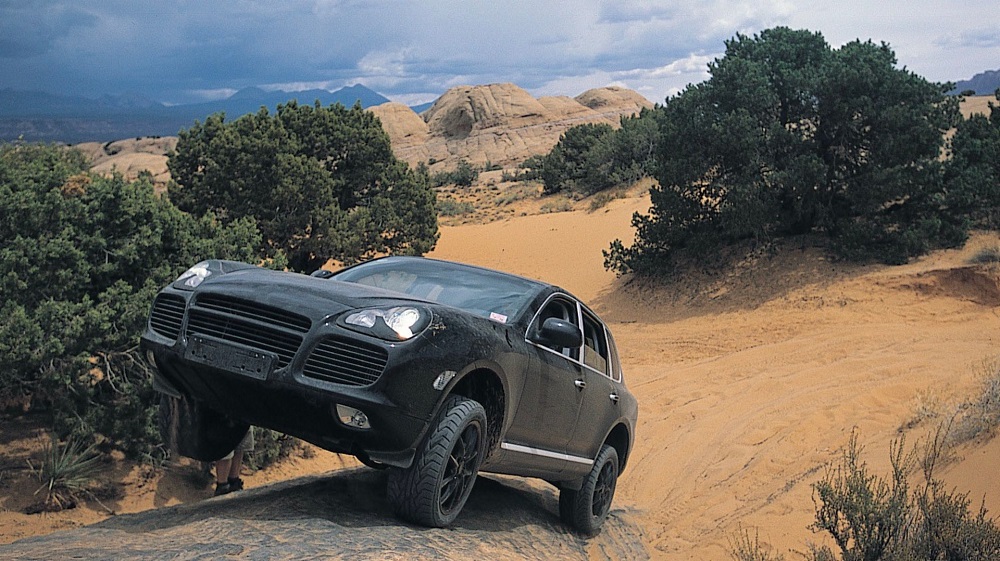20 Years of the Cayenne: How the ‘Third Porsche’ Came to Be the High-Performance SUV We Know Today
With just the Boxster and 911 there needed to be a third Porsche model to make the company profitable. The Cayenne was announced in 1998.
The Porsche Cayenne is a model that a lot of folks like to hate on. But the fact is that it saved the company and provided funds for projects like the GT2 RS, GT3, and all the other sports car models we love. And with automakers such as Aston Martin and Ferrari making SUVs now, the cries of Porsche should not make an SUV should be much quieter at this point. If you are still one of the hold outs that hates the thought of a Porsche SUV, consider this. In the mid-1990s Porsche knew it needed a third model to be profitable. And it nearly chose a luxury minivan as that third Porsche. So, we should all consider ourselves lucky that we got a high-performance SUV instead.
It might be hard to believe but the Cayenne made its debut 20 years ago at the Paris Motor Show in 2002. After two decades of seeing the Porsche SUV on the road we may take it for granted. However, it has quite an interesting origin story. Not only was the third Porsche almost a minivan, but once it was decided it would be an SUV, it was nearly a Mercedes M-Class offshoot. Let’s take a quick look back at how the Cayenne came to be.
Sports Car Limits
Porsche had the legendary 911 and the recently introduced Boxster in the second half of the 1990s. Even though the Boxster was a huge hit it was not going to be enough to save the company. In 1992 the company reported a loss of 240 million Deutschmarks. Sports cars alone would not be enough to turn a profit. “It was apparent that the sports car had its limits on the market,” recalls Anton Hunger, head of communications for former Chairman of the Executive Board Wendelin Wiedeking. “The sales division had clearly demonstrated this using market research. In the long run, Porsche would have ended up on a downward slope again.”
Third Porsche
Realizing a third Porsche model was needed the company developed five alternative vehicle concepts. The two finalists were a performance SUV and a luxury minivan. At the time the U.S. was the biggest market for Porsche and a luxury minivan was not going to work in America. “At the time in America, minivans were especially popular among families with many children and low incomes,” Hunger recounts. “But large SUVs were doing well across all income levels even back then.” This set Porsche on the SUV path. Now they just needed a partner. Turns out they had one just down the road.
Mercedes Partnership
Mercedes was going to launch the M-Class SUV in 1997 and they were willing to join forces with Porsche. The idea was that the Porsche SUV would be a high-performance offshoot of the Mercedes. The Porsche would share a lot of the M-Class technology. But the Porsche would have a unique exterior design and engine and chassis components. In the summer of 1996, the agreement was struck. However, it turned out to not be much more than a summer fling. By the end of that year the two companies had a falling out over the economic details of the deal. Now a new partner was needed.
Enter Volkswagen
This was back in the days before Porsche was part of the VW group, but the SUV collaboration made sense to both parties. “Porsche presented the concept to Volkswagen, and Ferdinand Piëch decided that they could also use a car like this,” explains Klaus-Gerhard Wolpert, the first Vice President for the Product Line Cayenne from 1998 to 2010. In June of 1997 the companies decided to join forces. The Cayenne and Touareg would be developed on the Porsche platform as part of the project known internally as ‘Colorado.’ About a year later the SUV project was made public to the shock and horror of many Porsche faithful.
Cayenne Standards
One thing made clear at the outset was the third Porsche still had to behave like a Porsche even if it was an SUV. In addition, it needed to handle the rough stuff as good or better than its competition. Wolpert had a brilliant idea to drive this point home to the engineers. All division managers had to turn in their beloved 911 company cars. Instead, they were to rotate thru driving a series of competitive SUVs such as the M-Class, BMW X5, Jeep Grand Cherokee, and Ford Explorer. This allowed them to experience the strengths and weaknesses of each vehicle. No one was happy about driving a Ford Explorer over a 911 but it provided valuable information that made the first-generation Cayenne as good as it was.
Cayenne Breaks Cover
In September 2002 at the Paris Motor Show the Cayenne was shown to the public. Porsche enthusiasts may not have been happy with what they saw but the model was and continues to be a smash hit for the company. 276,652 examples of the first generation Cayenne were sold, and over one million in total have been sold to date. Just last year more than 80,000 Cayenne SUVs were sold. Folks may have laughed at the idea in 2002 but no one is laughing now.
Photos: Porsche
Join the Rennlist forums!







